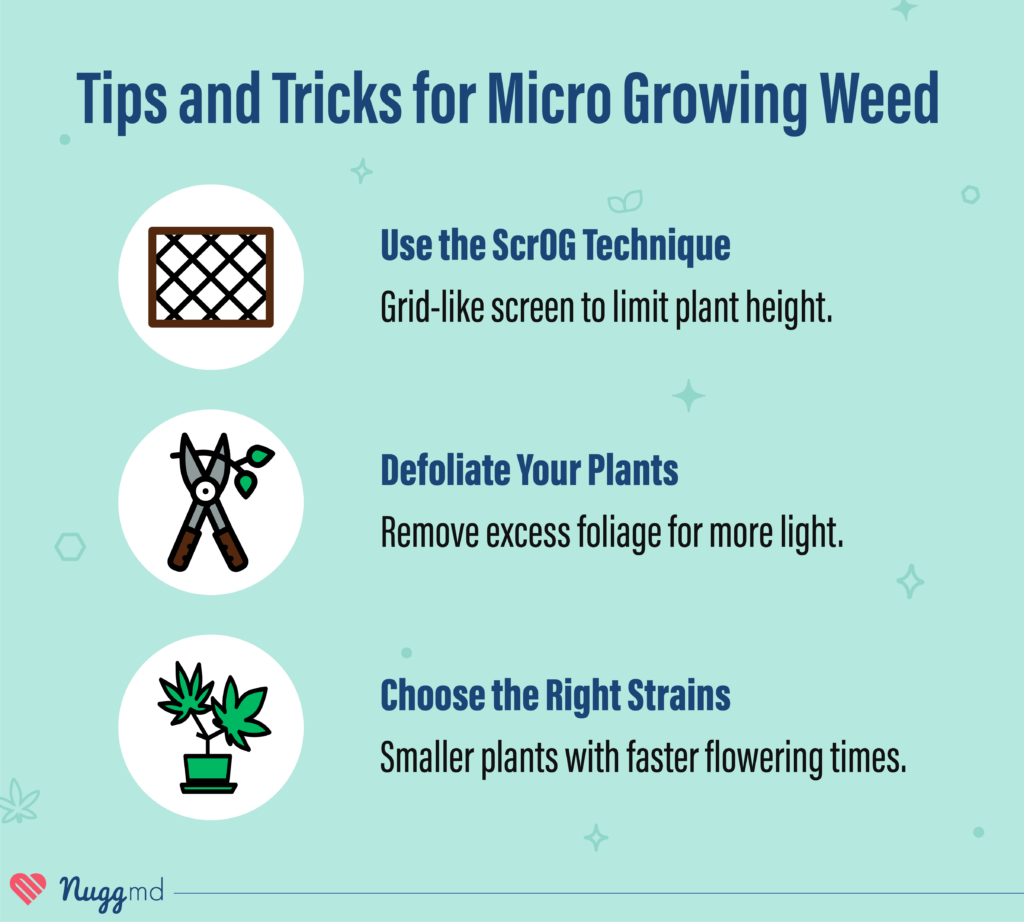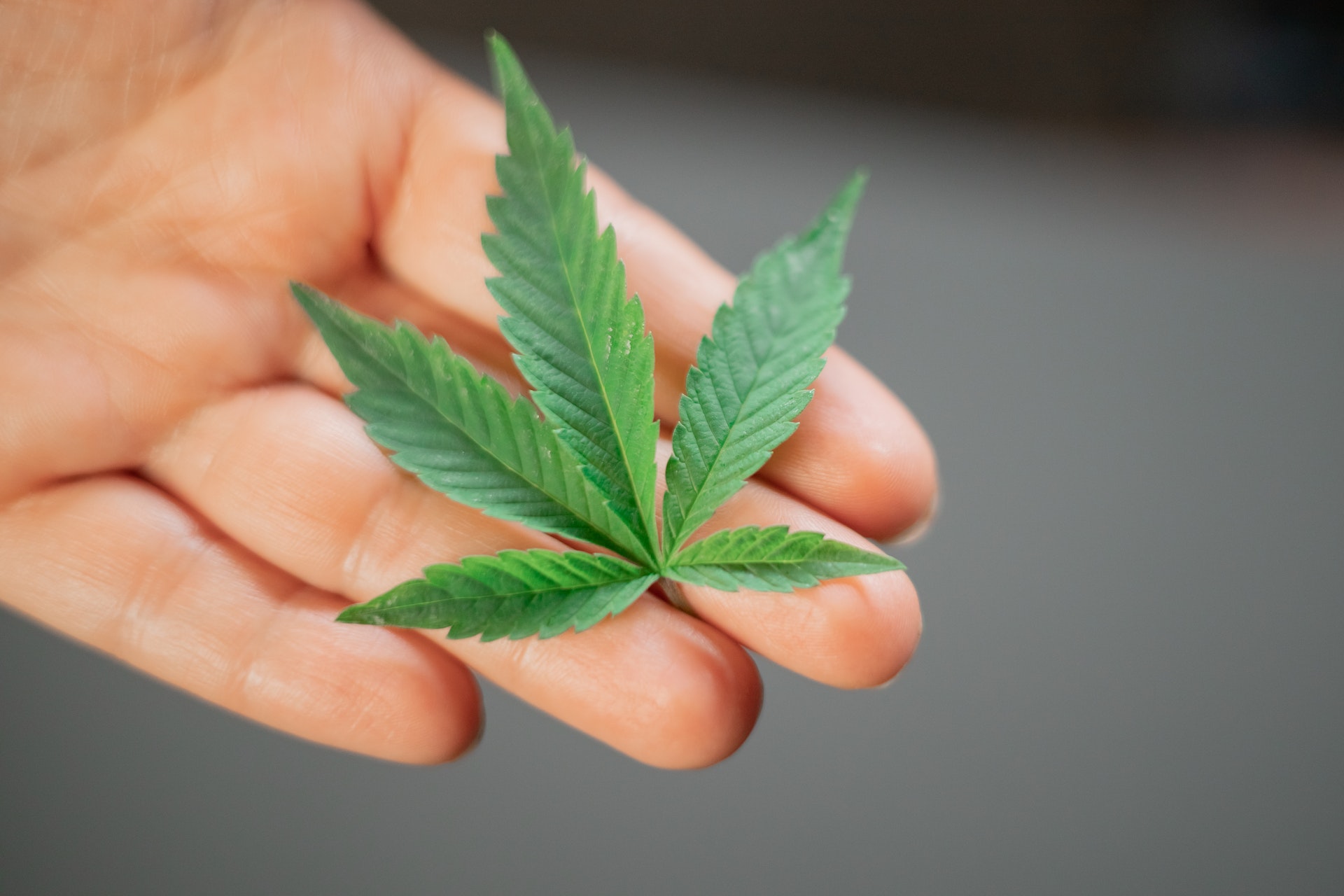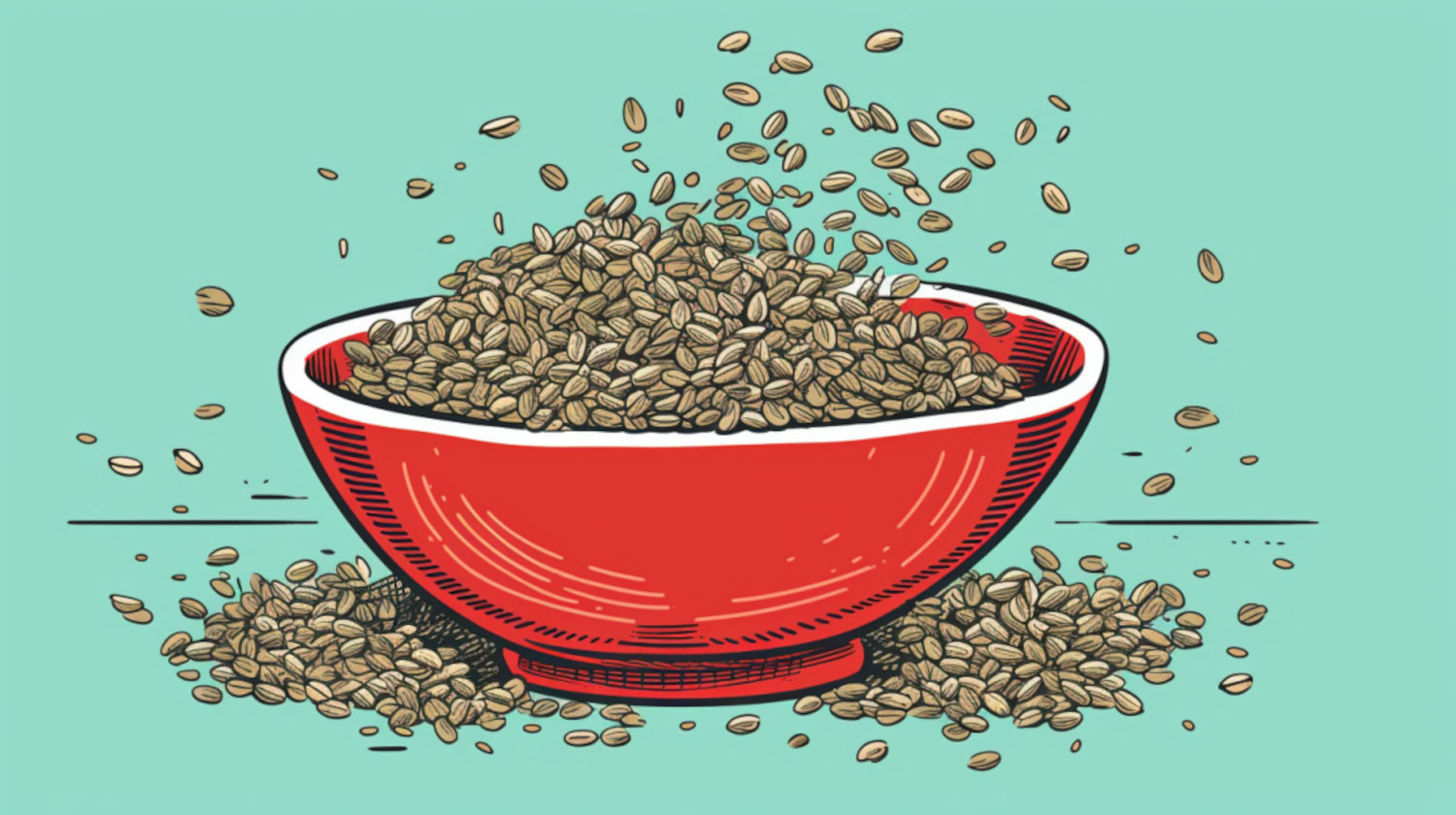In This Article
- What is Micro Growing?
- Micro Growing Weed Setups
- Micro Growing Cannabis in The Closet
- Micro Growing Weed in a Computer Tower
- Micro Growing Weed in a Grow Tent
- Requirements for Micro Growing Weed
- Soil
- Potting
- Lighting
- Water
- Ventilation
- Nutrients
- Ideal Cannabis Strains for Micro-Growing
- Blue Dream
- Gelato 45
- Critical Kush
- Easy Bud
- Tips and Tricks for Micro Growing Weed
- Use the Screen of Green (ScrOG) Technique
- Defoliate Your Micro Grow Plants
- Choose the Right Strains
- Conclusion
As adult use and medical cannabis become more accessible than ever, an explosion of at-home cultivation has taken place. However, not everyone has the space, whether inside or outside, to grow their own cannabis.
If you lack space to start your own home grow, micro-growing may be a solution.
Read on to learn more about micro-growing weed, what it is, what you need, and tips and tricks for starting your own micro-growing in a limited space.
What is Micro Growing?
So, what is micro-growing?
A cannabis micro grow is similar to standard cannabis cultivation but on a smaller “micro” scale.
While the space you have to grow may be smaller, that doesn't mean you can't grow high-quality cannabis. In fact, microgrowers can produce top-shelf flowers with all the flavor, aroma, and potency of standard grows.
Besides the constraint of limiting the size of plants (and the additional effort and attention to detail that will be required), micro-growing weed doesn’t differ significantly from standard cannabis cultivation.
Micro Growing Weed Setups
There are a wide variety of micro-grow setups that you can use to start cultivating cannabis in virtually any space.
Here are some of the most common micro grows you may wish to use at home:
Micro Growing Cannabis in The Closet
One of the oldest and most popular micro grow methods is growing cannabis in a closet. In fact, the closet grow method has been used since long before the term "micro grow" became standard industry lingo.
Virtually every home or apartment has a closet. This allows closet growers to use LED grow lights to feed their cannabis plants and provides a dark environment to mimic the day-night cycle (which is also ideal if you plan on using light deprivation).
In a closet micro grow, you can use soil or hydroponics as a growing medium, depending on your preference.
If you want to start a micro grow, a spare closet offers the most straightforward option.
Micro Growing Weed in a Computer Tower
While you may think growing weed in a closet is cramped, wait until you hear about how cultivators use empty computer towers to grow cannabis.
To clarify, a computer tower is a metal frame containing all the desktop computer's hardware. If you were to empty it (or just buy an empty computer tower), you would be left with a solid metal box perfect for a micro-grow setup.
Considering how small this micro-grow space is, many cultivators use LEDs when growing weed in computer towers. LEDs are small, efficient, and powerful grow lights naturally suited to this type of setup.
Micro Growing Weed in a Grow Tent
Those readers who are familiar with indoor cannabis cultivation may already know about grow tents. These tents are specifically designed for growing cannabis plants in limited space.
No matter how much space you have available, you should be able to easily find a grow tent to fit your area. Small grow tents offer a simple solution for would-be microgrowers.
With any micro-grow method, you'll still need to select the right materials and set up your space and equipment. Let’s look at what you’ll need to get started.
Requirements for Micro Growing Weed

The right equipment will allow your cannabis plants to produce regardless of the space you have.
Soil
Most micro growers choose soil as their growing medium, as it is much easier to use in a tiny space than a hydroponic setup.
Since microgrowing requires limiting the size your plants can reach, you'll want to initially plant your seedlings with a lot less soil than you otherwise would.
The less soil there is, the less the roots will grow and expand, which plays a huge role in determining the size of the plant.
Potting
You'll also want to make sure you use small pots to limit the cannabis plant's size.
If you use the same size pots you'd find in a typical indoor grow, you'll likely find that the cannabis plants will grow too tall and too wide for your limited space.
It's generally recommended that you only use pots that are 3L in size or smaller, depending on your micro-grow setup.
Lighting
Grow lights are crucial for successfully cultivating cannabis. Micro grows make this essential requirement all the more significant given the unique circumstances involved.
Many cultivators have claimed that finding the right grow lights is the most challenging part of setting up a successful micro grow.
Since micro-growing cannabis involves such a limited space, it can be difficult to distance particularly grow lights far enough from a plant. When grow lights are too close, they may burn or otherwise harm the cannabis plant.
LED grow lights offer a popular solution for DIY micro growers. They readily provide the full spectrum of light necessary for healthy plant growth and don't produce much heat, which means they can be placed closer to plants than is possible with other lighting.
The only downside to LED grow lights is that many high-quality options can be prohibitively expensive, especially for hobbyists or small-time cultivators.
Water
While watering may be essential for any sort of plant cultivation, it can be especially imperative while micro-growing cannabis.
This is because most micro-grow setups (besides hydroponics) intentionally use significantly less soil than you otherwise would to limit the size of the plant. While this helps control the size of the plant, it has the unintended side effect of requiring more frequent watering. Put another way, the less soil there is, the faster it'll dry out.
When setting up your micro-grow, keep this frequent need for water in mind. If possible, do yourself a favor and ensure you can water the plants comfortably and efficiently in your space.
Pro tip: The base of the plant is the only place that should be regularly watered. If you regularly water the leaves or the buds, you risk mold developing on your weed.
Ventilation
Ventilation is another factor you'll need to pay extra attention to with any indoor micro grow setup. Strong cannabis plants require proper ventilation and air circulation.
How you ventilate your grow ultimately depends on your setup. For example, if you're growing cannabis plants in your closet, you can simply keep the door open or make holes in the door, allowing air to circulate. Likewise, a small desktop fan provides excellent ventilation and airflow, and its small size makes it ideal for microgrowing.
Nutrients
Finally, your plants need nutrients - like calcium and nitrogen - to grow big and strong (well… relatively big).
Since micro grows need to be watered more frequently than other indoor grows, you'll likely need to adjust the amount of nutrients you feed your plants with each watering.
You'll find that many nutrients you purchase will likely have information on the bottle with the proper amounts. However, these figures are typically meant for normal, full-sized plants. So, you'll need to be mindful—and maybe do a little math—to ensure you aren’t giving your micro-grow plants too many or too few nutrients when feeding them.
Ideal Cannabis Strains for Micro-Growing
It’s important to remember that not every cannabis strain is suited for this type of small-scale cultivation.
But don't worry! There are plenty of high-quality cannabis strains to choose from that will thrive in a micro grow.
Ultimately, the best micro grow strains are those that stay relatively short and narrow and will grow and flower quickly.
Blue Dream
Blue Dream is an excellent strain for microgrowing as it doesn't take long to flower. If you begin a Blue Dream plant from a clone, it may start to flower in as little as ten weeks.
Gelato 45
Like Blue Dream, Gelato 45 grows and flowers very quickly. It has long been a favorite of indoor growers, making it an ideal choice for micro-growing.
Critical Kush
This legendary strain is well suited to indoor grows with limited space.
Easy Bud
Finally, one of the best strains for micro-growing is Easy Bud. As the name suggests, this strain is easy to grow: it’s resilient, small (rarely growing over two feet in height), and perfect for beginners.
Tips and Tricks for Micro Growing Weed

Once you have your bases covered (lighting, watering, ventilation), you can introduce several other techniques to achieve the best micro-grow harvest possible.
Use the Screen of Green (ScrOG) Technique
This indoor growing technique involves using a grid-like screen or net, such as chicken wire, to limit the height and width of your cannabis plants. Once the cannabis plants have grown through the holes of the screen, growers can weave the branches within the holes so that the plant will grow vertically instead of horizontally.
This is an excellent technique for micro-growing, as you can have your cake and eat it too: you can limit the height of your plants without restricting the growth and the eventual yields your plants will produce.
Defoliate Your Micro Grow Plants
If you want your microgrows to compensate for their limited size and produce the best yields possible, be sure to defoliate them as they grow. This process involves removing excess foliage so more light can penetrate the plant, leading to bigger, better buds.
Choose the Right Strains
As we mentioned earlier, not every cannabis strain is an ideal candidate for micro-growing. Instead, you'll want one that naturally produces smaller plants and faster flowering times.
Conclusion
Microgrowing offers a home cultivation solution for medical cannabis patients and recreational consumers alike who may not have the space to start a traditional outdoor or indoor grow. If you follow the tips in this article, you can still produce top-shelf quality flower despite the space limitations.
The information in this article and any included images or charts are for educational purposes only. This information is neither a substitute for, nor does it replace, professional legal advice or medical advice, diagnosis, or treatment. If you have any concerns or questions about laws, regulations, or your health, you should always consult with an attorney, physician or other licensed professional.




